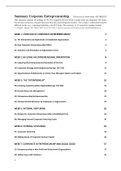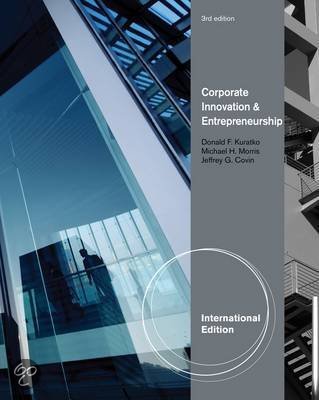Summary
Summary Corporate Entrepreneurship (UvA) - GRADE 8.0
- Course
- Institution
- Book
This summary contains all readings of CE 2023 taught by Kevin Curran. Lecture notes are integrated. For exam: Try to focus on the key concepts that have been discussed during the lectures. Try to make a connection between different weeks (e.g., exploring/exploiting + the ICV loop). The summary is 1...
[Show more]




